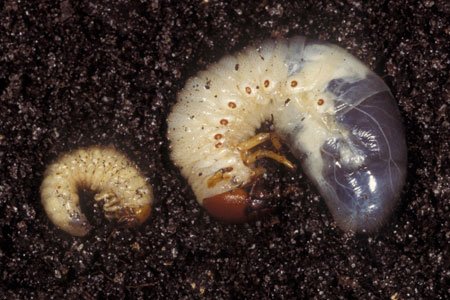
Think of grub worms like your favorite TV binge-watching character—they don’t exactly hibernate like bears do, but they do slow down considerably when it gets cold, much like how we slow down on outdoor activities during winter. So, let’s dive into what really happens to grub worms in cold weather and how this affects your lawn come spring.
What Are Grub Worms?
Before we get into their winter habits, let’s clarify what grub worms actually are. Typically, when people refer to grub worms, they mean the larvae of certain beetles, like the Japanese beetle or the European chafer. These little guys are white and C-shaped, living just below the soil surface.
So why should you care about them? Well, they feast on grass roots, which can lead to brown patches and an unhealthy lawn. If you’ve ever noticed your grass looking a little worse for wear, grub worms might be to blame.
How Do Grub Worms Survive Winter?
Now, you might be asking, “Okay, so do grub worms hibernate?” The simple answer is no, but they do enter a state of dormancy. As temperatures drop, grub worms become less active and stop feeding. It’s like hitting the pause button on their lives.
During this dormancy, grub worms burrow deeper into the soil to escape the cold. While they don’t hibernate in the traditional sense, they certainly know how to survive. This deeper soil layer helps them avoid freezing temperatures and the harsh elements above ground, much like a cozy blanket wrapping them up warm.
How Cold Is Too Cold for Grub Worms?
Grub worms can tolerate a range of temperatures, but they really don’t thrive when it gets too chilly. Generally, they start to feel the effects of cold when temperatures drop below 50°F (10°C).
When it gets colder than that, they slow down significantly. This drop in activity isn’t just a minor inconvenience; it’s a survival strategy. The deeper they go into the soil, the better their chances of making it to spring when they can start feeding and growing again. You might think of them as taking a long vacation underground until the weather turns favorable.
How Does This Affect Your Lawn?
Understanding how grub worms behave during winter is crucial for keeping your lawn healthy. If they’re lying dormant beneath the soil, you won’t see many signs of damage until spring arrives.
In early spring, as the ground begins to warm up, these little pests will emerge, and that’s when they start damaging your grass. They’ll resume feeding, which can result in more brown patches, especially if their population is large. If you want a healthy lawn, keeping an eye on grub worm activity when the weather warms up is vital.
Can You Prevent Grub Worm Issues in Winter?
While you can’t stop grub worms from going dormant, there are steps you can take to mitigate their impact on your lawn in spring. Here are some proactive measures:
- Apply Nematodes: These microscopic worms can help control grub populations. Applying them in late spring or early summer helps keep grub counts low.
- Maintain Lawn Health: A well-maintained lawn can better withstand grub damage. Regular watering, mowing, and fertilizing create strong grass that can recover.
- Monitor for Signs: Look for patches of brown grass in late summer or early fall. Catching grub infestations early can save your lawn.
These preventative measures can significantly lessen the impact grub worms have as spring rolls around.
What Happens When Spring Arrives?
As the weather warms up, grub worms become active once again. Imagine waking up from a long sleep; they crawl back towards the surface, ready to feast on your grass roots. This is when many homeowners notice a sudden decline in lawn health.
During this time, it’s essential to monitor for signs of grub damage. The earlier you can identify an infestation, the easier it is to manage. You might even consider contacting a lawn care professional if you see significant damage. Leaving it unchecked could lead to larger problems down the road.
Final Thoughts on Grub Worms in Winter
So, do grub worms hibernate during winter? Not quite. Instead, they enter a state of dormancy to survive the cold, burrowing deep into soil where they can hunker down until spring. Understanding their behavior can play a crucial role in protecting your lawn.
By being proactive during the winter months and staying vigilant when spring arrives, you can keep your lawn healthy and thriving. Now that you know the facts about grub worms, you can enjoy a healthier lawn without those pesky surprises come spring!
